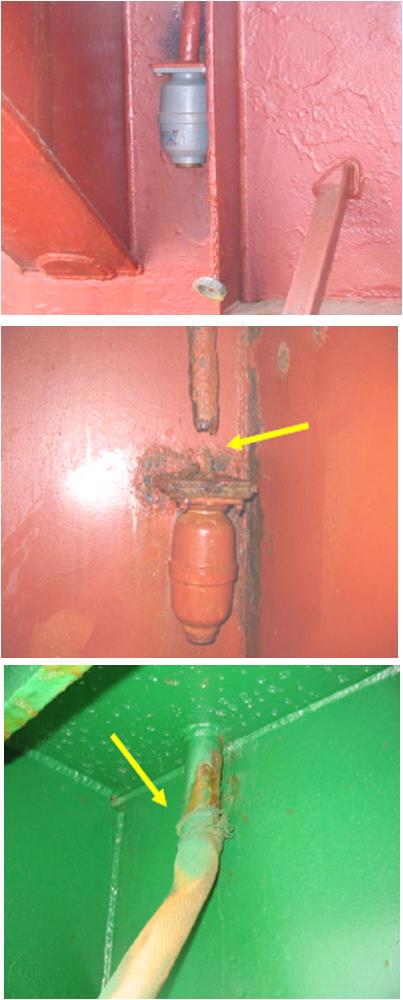WHAT TO CHECK ON HATCH COVERS
Guide Notes for Hatch Covers of Dry Cargo Ships Survey
1.
Statutory surveys of hatchcovers and their coamings are to be carried
out by the Administration as part of the annual survey required by
article 14 of the International Convention on Load Lines, 1966, as
modified by the 1988 Protocol relating thereto. The International
Maritime Organization (IMO) adopts the International Code on the
Enhanced Program of Inspections During Surveys for Bulk Carriers and Oil
Tankers, 2011 (2011 ESP Code) by means of the Resolution A. 1049 (27)
regarding IMO mandatory inspection regime for tankers and bulk carriers
which contains the approved text as set out in the annex to this
Resolution.
2.
A thorough survey of hatch covers and coamings is only possible by
examination in the open as well as closed positions and should include
verification of proper opening and closing operation.
As
a result, at least 50% of hatch cover sets should be surveyed open,
closed and in operation to the full extent in each direction, at each
annual survey. The closing of the covers should include the fastening of
all peripheral, and cross joint cleats or other securing devices.
Particular attention should be paid to the condition of hatch covers in
the forward 25% of the ship’s length, where sea loads are normally
greatest.
3.
If there are indications of difficulty in operating and securing hatch
covers, additional sets above those required by 2, at the discretion of
the surveyor, should be tested in operation.
4.
Owners and operators should ensure that facilities and personnel are
available to perform the required hatch cover movements during each
annual survey.
5.
It is implicit that if the hatch securing system cannot be properly
operated, the ship will be obliged to effect repairs under the
supervision of the Administration. Where hatch covers or coamings
undergo substantial repairs, the strength of securing devices should
comply with IACS UR S30.
6.
Owners and operators should be made aware that partial replacements in
cleating systems have the potential to introduce imbalance between old
and new cleats. This could result in isolated cleats being subjected to
excessive loads, which may then lead to sequential failure.
7. For each hatch cover set, at each annual survey, the following items should be surveyed:
7.1
cover panels, including side plates, and stiffener attachments of
opened covers, by close up survey (for corrosion, cracks, deformation);
7.2
sealing arrangements of perimeter and cross joints (gaskets for
condition and permanent deformation, flexible seals on combination
carriers, gasket lips, compression bars, drainage channels and non
return valves);
7.3 clamping devices, retaining bars, cleating (for wastage, adjustment, and condition of rubber components);
7.4 closed cover locating devices (for distortion and attachment);
7.5 chain or rope pulleys;
7.6 guides;
7.7 guide rails and track wheels;
7.8 stoppers;
7.9 wires, chains, tensioners and gypsies;
7.10 hydraulic system, electrical safety devices and interlocks; and
7.11 end and inter-panel hinges pins and stools where fitted.
8.
At each hatchway, at each annual survey, the coamings, with plating,
stiffeners and brackets should be checked for corrosion, cracks and
deformation, especially of the coaming tops.
9.
Where considered necessary, the effectiveness of sealing arrangements
may be proved by hose or chalk testing supplemented by dimensional
measurements of seal compressing components.
http://www.iacs.org.uk/document/public/Publications/Guidelines_and_recommendations/PDF/REC_15_pdf178.pdf
Resolution A. 1049 (27)
http://www.imo.org/KnowledgeCentre/IndexofIMOResolutions/Documents/A%20-%20Assembly/1049%2827%29.pdf















Comments
Post a Comment